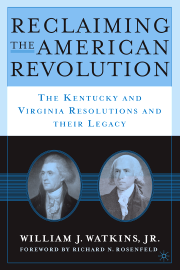Under 18 U.S.C. § 106, September 17 is designated as Constitution Day and Citizenship Day. It commemorates the formation and signing on September 17, 1787, of the U.S. Constitution and celebrates American citizenship. The statute encourages state and local governments to instruct the people “in their responsibilities and opportunities as citizens of the United States.” Since 2005, all educational institutions receiving federal funds of any kind are required by law to provide programming to observe the occasion.
So what sort of lessons should local governments and educational institutions construct? A good start would be the First Amendment and how the guarantee of free speech is trampled by a federal mandate that requires schools to teach about any project, salutary or not, of the federal government. It might also be pointed out that the Constitution contains no “education power” and that all federal meddling in the school system, such as No Child Left Behind or Constitution Day itself, is patently unconstitutional.
After these attention grabbers, the lessons might turn to the original structure and design of the Constitution. The Federalist Papers could be a helpful tool. For example, in Federalist No. 45 James Madison observed that “[t]he powers delegated by the proposed Constitution to the Federal Government are few and defined. Those which remain in the State Governments are numerous and indefinite.” The Father of the Constitution went on to explain that the federal government would only be involved in “external objects” such as “war, peace, negotiation, and foreign commerce.”











